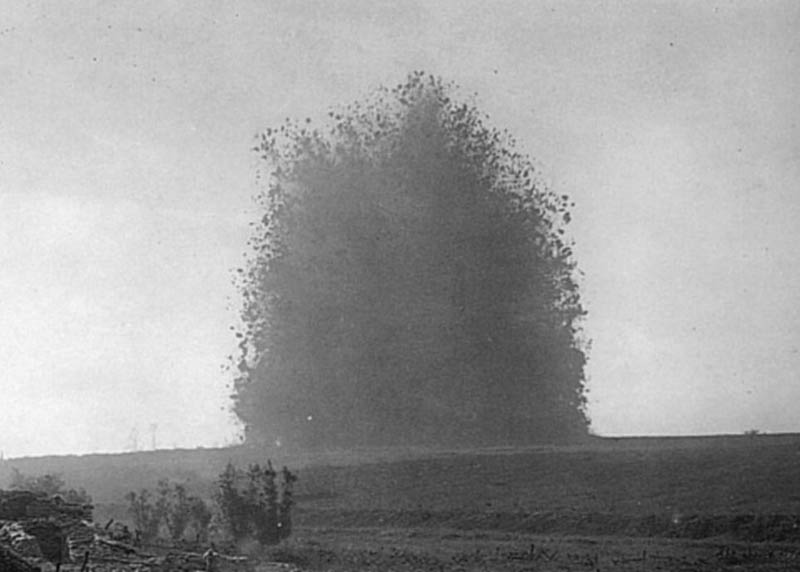
Lochnagar Crater Reviews OvillerslaBoisselle, Somme Attractions TripAdvisor Aerial view
The Lochnagar Crater is located outside the village of La Boisselle, along highway D929 between Albert and Pozières; follow signs to La Grande Mine. Otherwise, join a WWI battlefields tour to visit the site without the hassle of driving. Royal castles, medieval fortresses, and a village in the clouds—these 10 French towns will have you.

Travel Trip Journey Lochnagar Crater Somme in France
The Lochnagar Crater is remarkable for many reasons and to this day it is the largest crater ever made by man in anger. At the time it was, and remains still, a truly awe-inspiring and powerfully evocative sight.

The Lochnagar mine crater near La Boisselle, Somme, Picardy, France Stock Photo Alamy
The area around Albert, in northern France, is full of World War I memorials and monuments, since this was the Western Front, site of long and bloody battles.. One of the more unusual sites is the Lochnagar Crater, just 4.4 kilometers (almost 3 miles) northeast of Albert (), just south of the village of La Boisselle.. Sometimes referred to as the Trou de Mine, or mine hole, this huge crater.

Lochnagar mine crater, Somme, France. Crater caused by underground mine detonation during World
Lochnagar Crater in the Picardie area of France is the most recognizable example of this method. Mines at the Somme. The Lochnagar mine was dug by the Tunnelling Companies of the Royal Engineers and was detonated at 7.28am on July 1st, 1916. It was just one of eight large, and eleven small, charges that were placed underneath German lines for.

Lochnagar Crater caused by a British mine during World War One, Albert, Somme, France, May 2016
The Lochnagar Crater is remarkable for many reasons, to this day it is the largest crater ever made by man in anger - but statistically there are many other interesting facts that make Lochnagar both an awe-inspiring and inspirational place. The Lochnagar mine was the largest of the 17 mines that exploded on 1st of July 1916. It was packed with

Lochnagar Crater Somme in France Charismatic
On 1 st July 1978 the piece of ground containing this huge crater was purchased by Richard Dunning. At that time the crater was a place of interest visited by just a few people during the year: historians of the First World War, pilgrims visiting a relative's grave and a very small number of organised battlefield tours.

Lochnagar Crater Travel In Pink
Developers Privacy Policy & Safety How YouTube works Test new features NFL Sunday Ticket © 2024 Google LLC A mine explosion in France during World War I left a crater 70ft (21m) deep and 330.

The Lochnagar Crater is the result of an explosive mine detonated below the German lines on the
Lochnagar Crater Watch on Find us on Trip Advisor Visiting Lochnagar Crater Somme Tourisme provides many links and suggestions for staying locally and touring the battlefield. https://www.visit-somme.com/great-war https://www.historial.fr/en/our-partners/the-somme-battlefields-partners/

Lochnagar crater « La Boisselle » Département 80.
Le Trou de mine de La Boisselle appelé encore La Grande Mine et en anglais, Lochnagar Crater est un lieu de mémoire de la bataille de la Somme, pendant la Grande Guerre situé sur le territoire de la commune d' Ovillers-la-Boisselle à 600 m au sud-est du village de La Boisselle sur le Circuit du Souvenir. Aujourd'hui, il a un diamètre d'au.

Lochnagar Mine Crater and memorial cross in fog near Ovillers on the Somme in France Stock Photo
Lochnagar or Beinn Chìochan is a mountain in the Mounth, in the Grampians of Scotland. It is about five miles (eight kilometres) south of the River Dee near Balmoral. It is a popular hill with hillwalkers, and is a noted venue for summer and climbing .

Picture of the Day Never The Lochnagar Crater » TwistedSifter
The Lochnagar Crater is pleased to be host to several unique memorials from a diverse range of causes. We are proud to offer pilgrims a place to pause and reflect in a now peaceful setting. 3d model of the Lochnagar crater in La Boisselle, France Drone footage taken with the landowner's (Richard Dunning's) permission Created using Pix4D

Lochnagar Crater in Somme Battlefields France Stock Photo Alamy
The Lochnagar mine south of the village of La Boisselle in the Somme département was an underground explosive charge, secretly planted by the British during the First World War, to be ready for 1 July 1916, the first day on the Somme.

Drone over Lochnagar Crater Biggest Explosion of WWI France YouTube
F. Fowke moved the 174th and 183rd Tunnelling Companies into the area, but at first the British did not have enough miners to take over the large number of French shafts; the problem was temporarily solved when the French agreed to leave their engineers at work for several weeks. [3]

The Lochnagar Crater, Normandy, France Stock Photo Alamy
Lochnagar crater is located south of the main D929 road which runs between Albert and Bapaume. It's well signposted (as 'la Grande Mine'), off to the right from the main road as this dips down to enter la Boiselle (travelling from Albert).

Lochnagar Crater YouTube
The Lochnagar Crater Foundation - Somme Memorial - History The Lochnagar Crater was created by a large mine detonated beneath the German front line by the British Army's 179th Tunnelling Company Royal Engineers, at 7:28am on July 1st, 1916.

Lochnagar Mine Crater, OvillerslaBoisselle, Somme, France Stock Photo Image of earth
09 Nov 2021 In the early days of World War One, the German Army advanced into Belgium and Luxembourg, creating the Western Front - a 400-mile-long stretch of land from France's Swiss border to the North Sea that would go on to host some of the most brutal theatres of conflict in World War One, if not all of history.